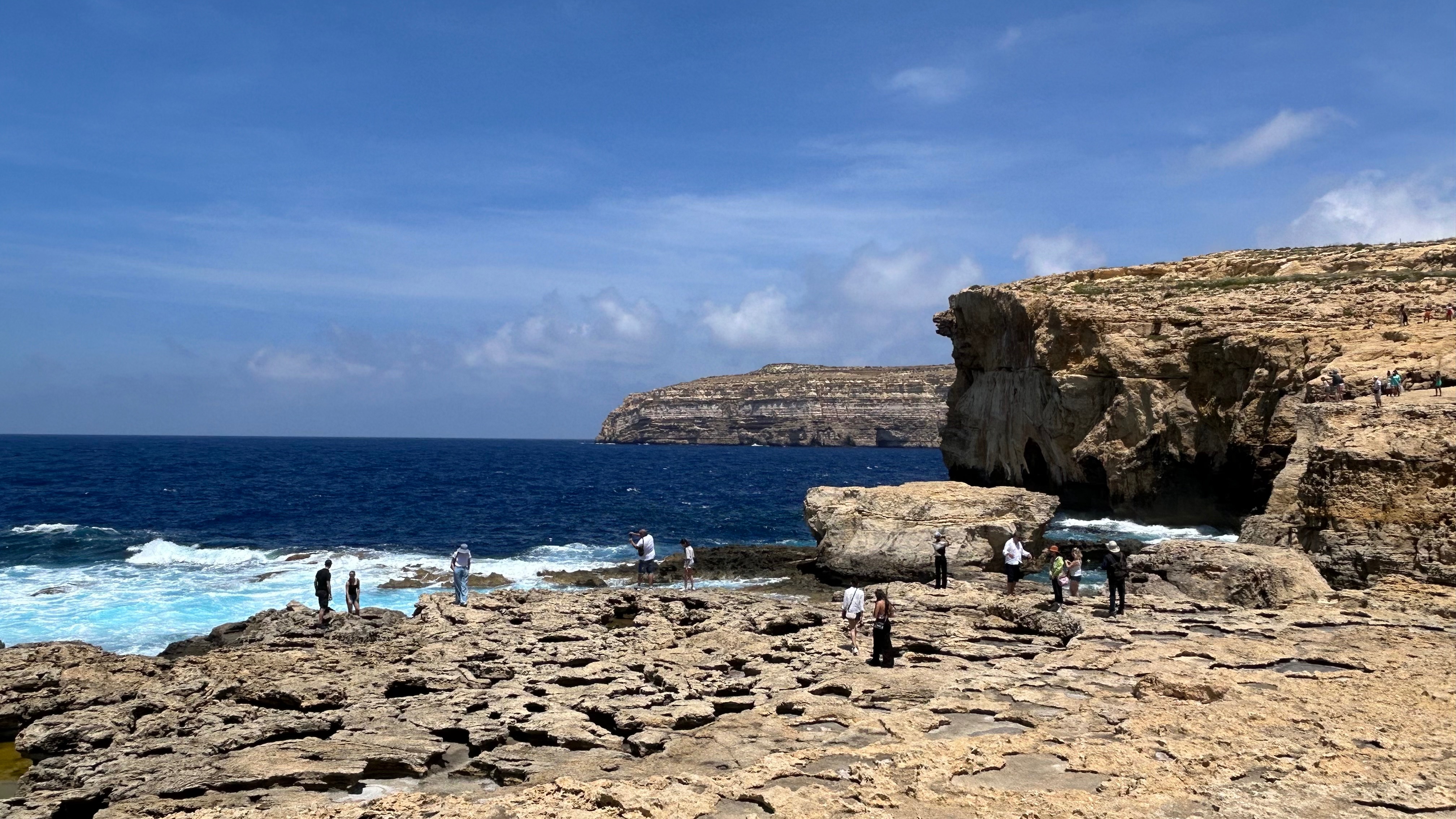Itinerary for May 30: Valletta - Gozo Island (8:30-17:30)
Morning: Head to Gozo Island, with Victoria as its capital. Visit the famous Azure Window ruins (a filming location for Game of Thrones), Victoria City, the CITADEL fortress, and the Ggantija Megalithic Temples.
Evening: Return to Valletta.
After breakfast on the third day of our arrival in Malta, we set off from the hotel.
This time we will visit Gozo Island, the second largest island of Malta.
We took a tourist bus to the ferry terminal in Malta.
At the terminal, we boarded a large cargo-passenger ferry to Gozo Island, which took about half an hour.
There were also many European and American tourists heading to Gozo Island in the morning.
It was my first time sailing on such a large mixed-use ferry in the Mediterranean, standing at the bow and looking out as the ferry slowly departed.
The temperature here at the end of May is very pleasant; yesterday while exploring the capital Valletta, the sun was strong and it felt a bit hot. Today, while sailing on the sea, the sun is still strong, but there is a cool breeze.
It feels really comfortable.
The half-hour journey quickly brought us to the dock of Gozo Island, the second largest island.
Gozo Island is 14 kilometers long and 7 kilometers wide, located in the northwest of Malta, separated by a small island called Comino, making it the second largest island in the Republic of Malta after the main island.
It has fertile land in the Konikarl Mountains, producing fruits, vegetables, grapes, and livestock. The main city is Victoria.
The island is relatively closed off, thus preserving much of its natural scenery and cultural landscape. The island is filled with green trees and rural landscapes.
Gozo Island is a popular vacation and leisure destination for both Maltese people and foreign tourists.
Gozo Island has a long history, with archaeological experts discovering that it has been inhabited for over 5000 years.
The Ggantija Temple ruins on the island are believed to date back about 3600 years, which is 800 years earlier than the Egyptian pyramids.
The temple still retains the outline from back then, with arches and large windows, and the male and female structures are firmly connected.
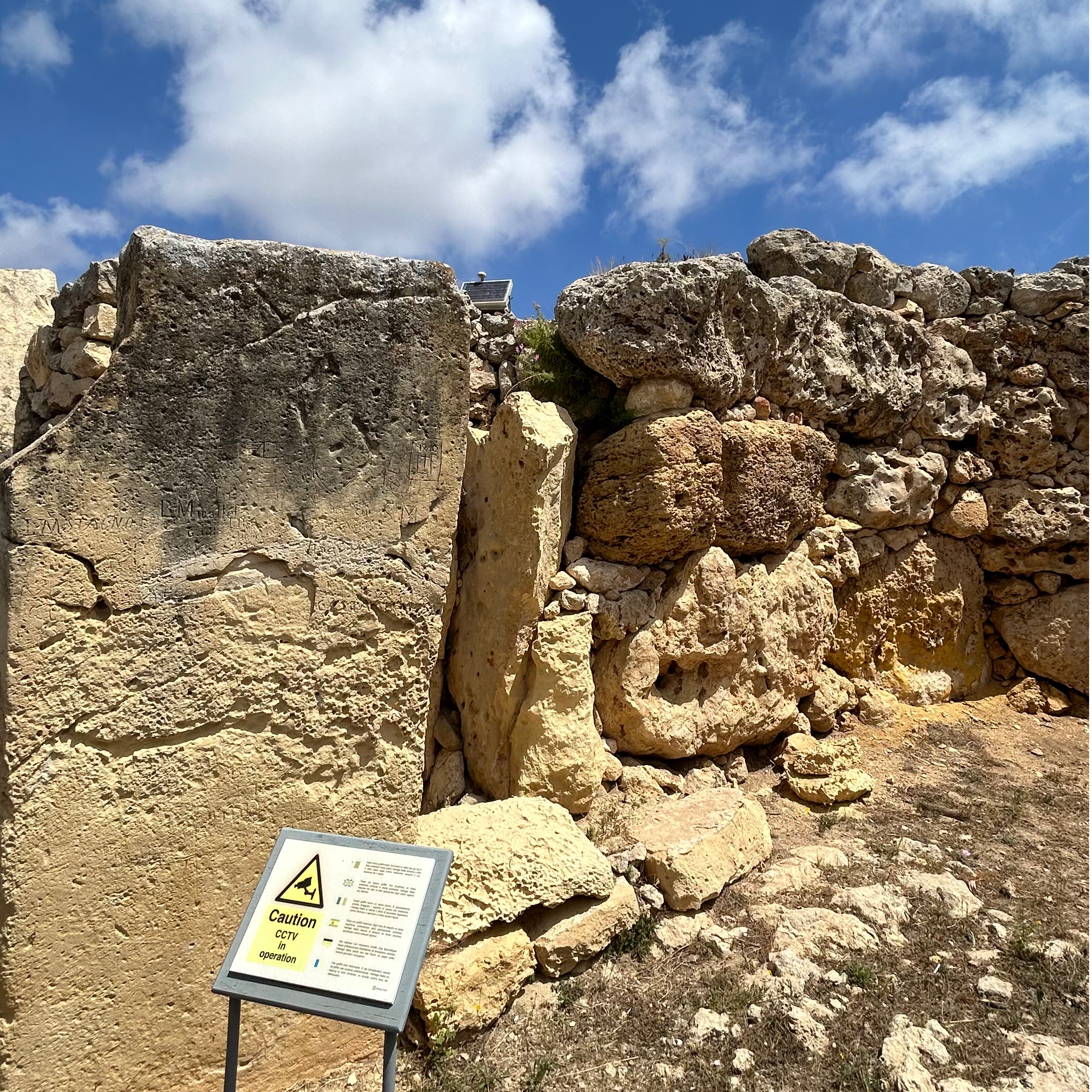
Gozo Island is surrounded by beautiful blue bays.
The most famous is Dwejra Bay, a geographical mystery, where behind its cliffs lies a natural shallow bay—the Inland Sea. Visitors can, when the sea is calm, take a small boat through a mysterious underground waterway connected to the Mediterranean, and in an instant, arrive at the open Mediterranean, where the clear water changes color under the sunlight.
The most famous natural attraction on Gozo Island is the "Azure Window," which resembles the Elephant Trunk Hill in Guilin, Guangxi, China, formed by the relentless waves eroding the limestone over thousands of years.
On both sides, there are 10-ton stones with a diameter of about 100 meters supporting an era, forming a "window" about 100 meters high and 20 meters wide, through which one can see the blue waves on the opposite side.
We arrived at Gozo Island by ferry, and after disembarking, we first took a bus to the Ggantija Temple, a UNESCO World Heritage site.
After about half an hour of driving, we reached the Ggantija Temple ruins.
Before entering the site for a visit, we first looked at the unearthed artifacts in a small exhibition hall and listened to the guide's explanation.
Facing artifacts from over 5000 years ago and listening to the guide's introduction was truly shocking.
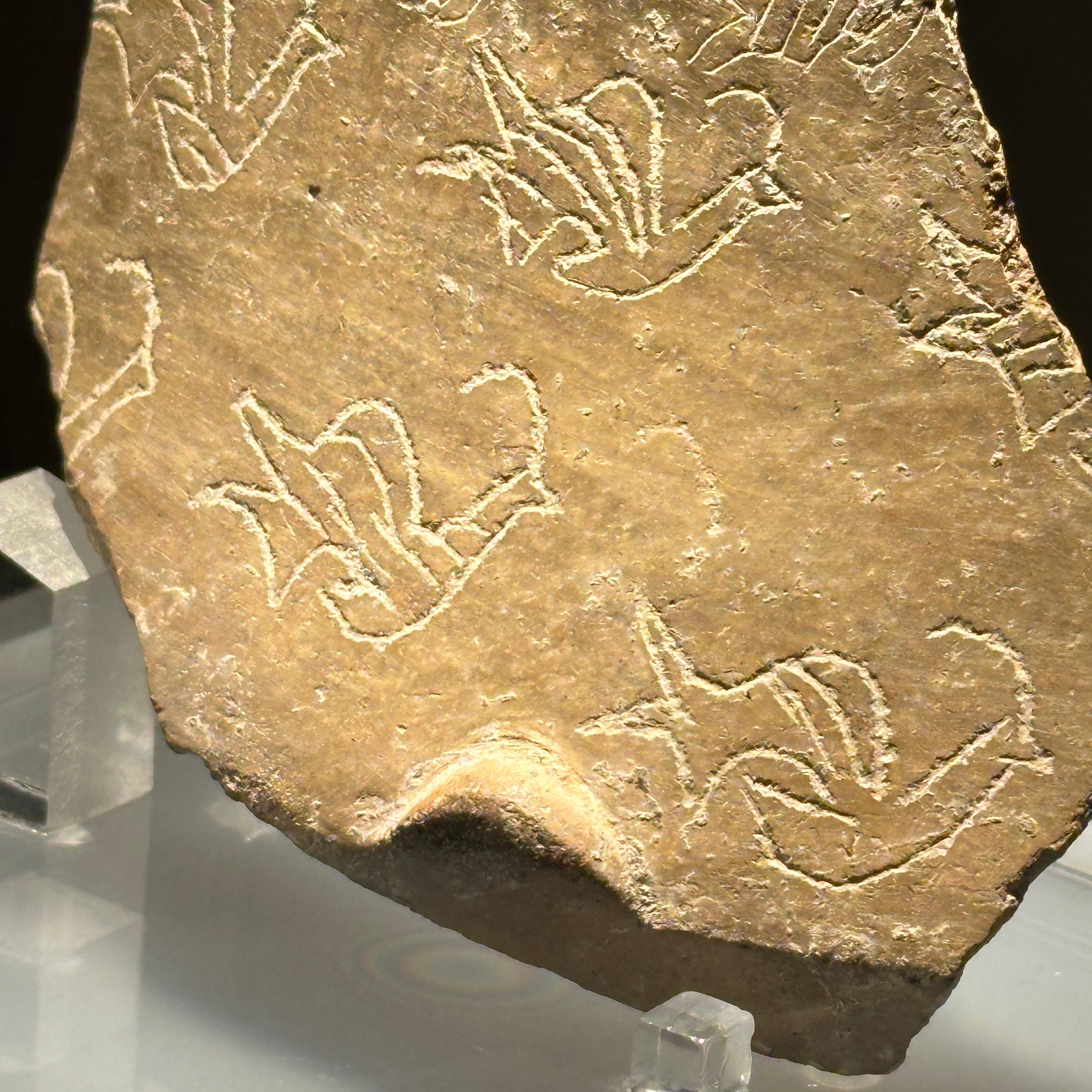
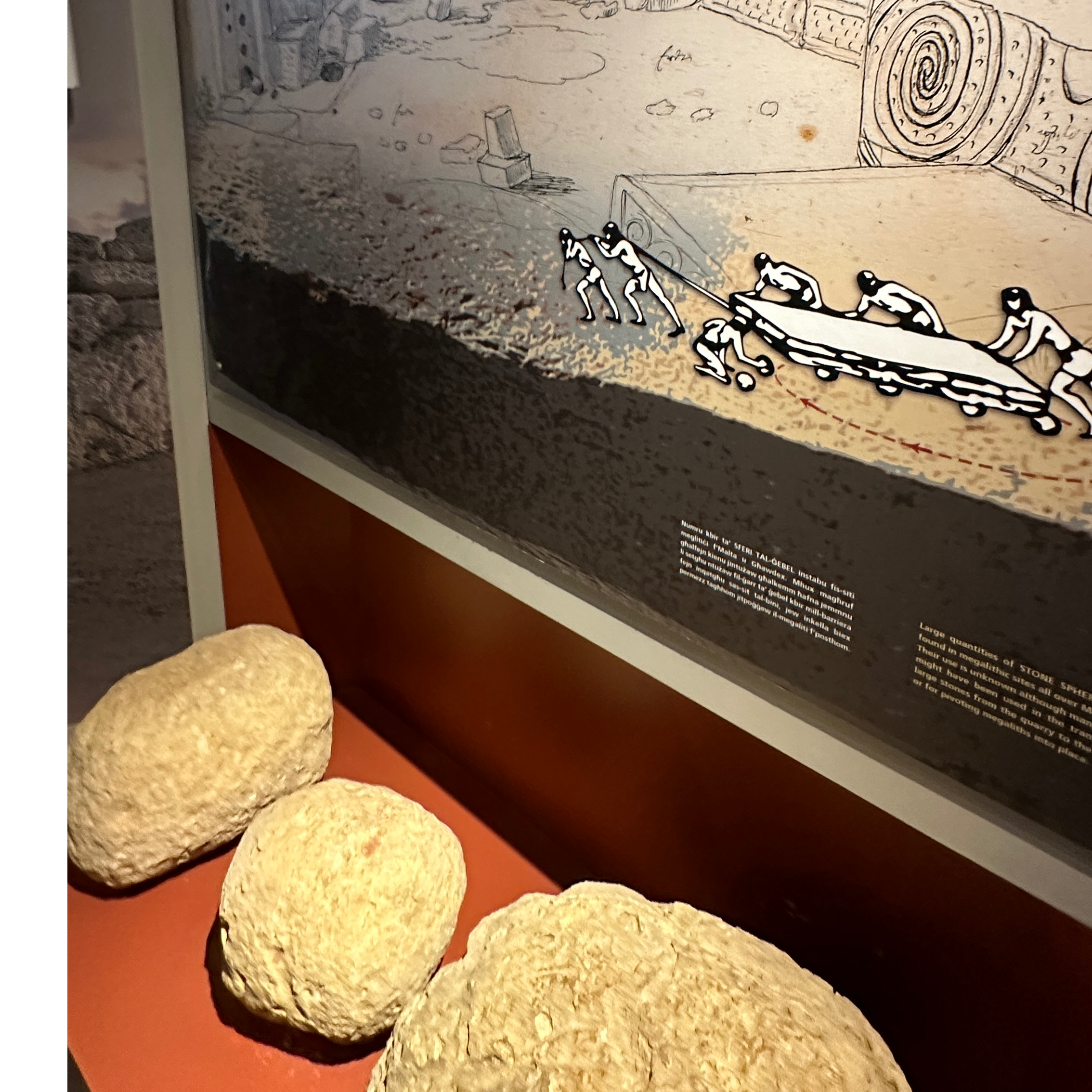
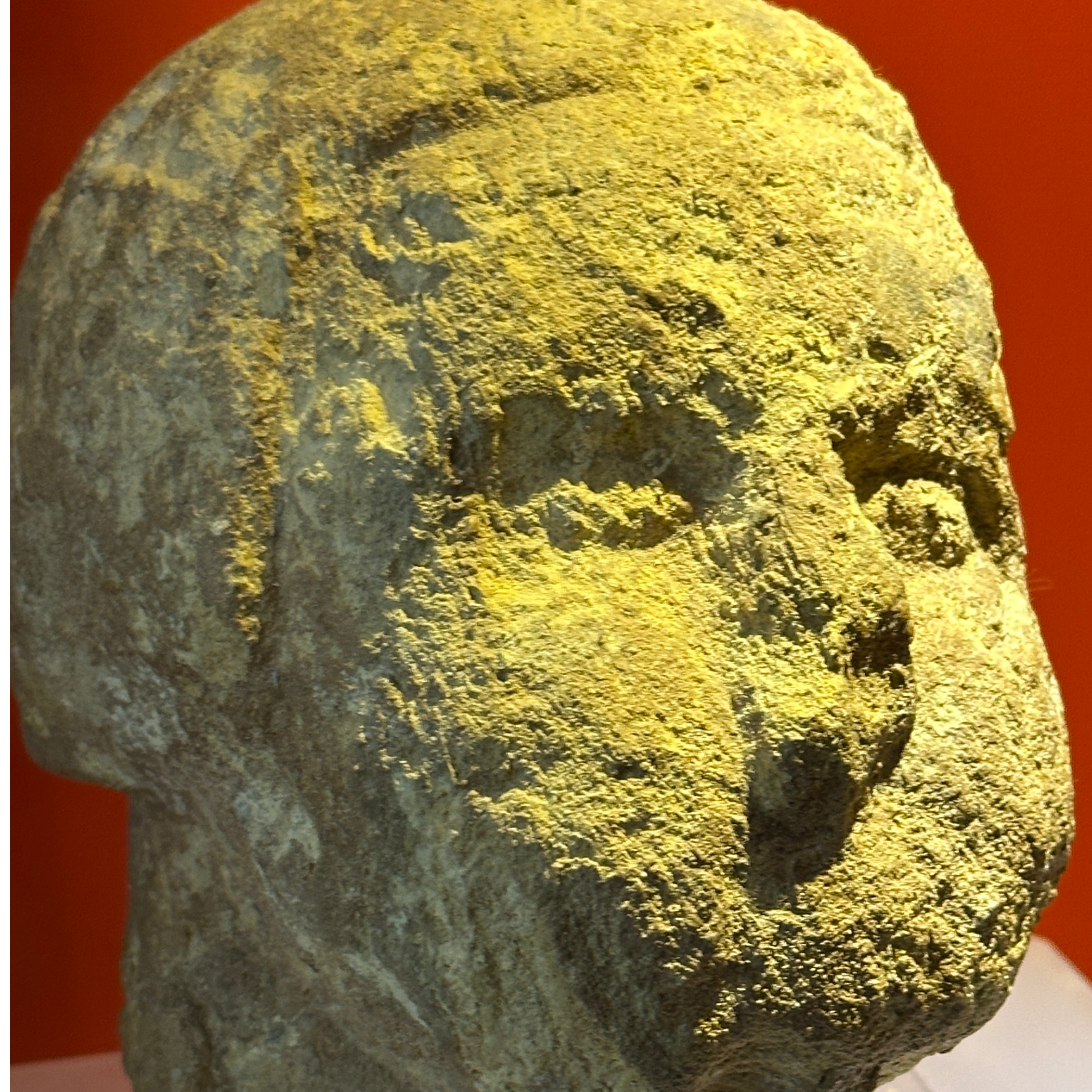
This temple, built over 5000 years ago, is from the Neolithic period and is said to have been constructed by giants, hence it is called the Ggantija Temple, also known as the Megalithic Temple.
It predates the Egyptian pyramids by about 1000 years. The guide mentioned that this temple was built for the worship of a matriarchal society, and the giant stones used to construct the temple were cut with ropes.
According to the guide, several megalithic temples scattered across Malta and Gozo are over 5000 years old, making them the earliest known freestanding stone structures in the world, and each site is independent of the others.
The megalithic temple on Gozo Island is one of the earliest buildings constructed using jointing techniques and is also one of the largest Neolithic temple ruins in Europe.
After listening to the guide's explanation and visiting the artifacts, we arrived at the site of the megalithic temple and entered the archaeological excavation site to explore the stone circle.
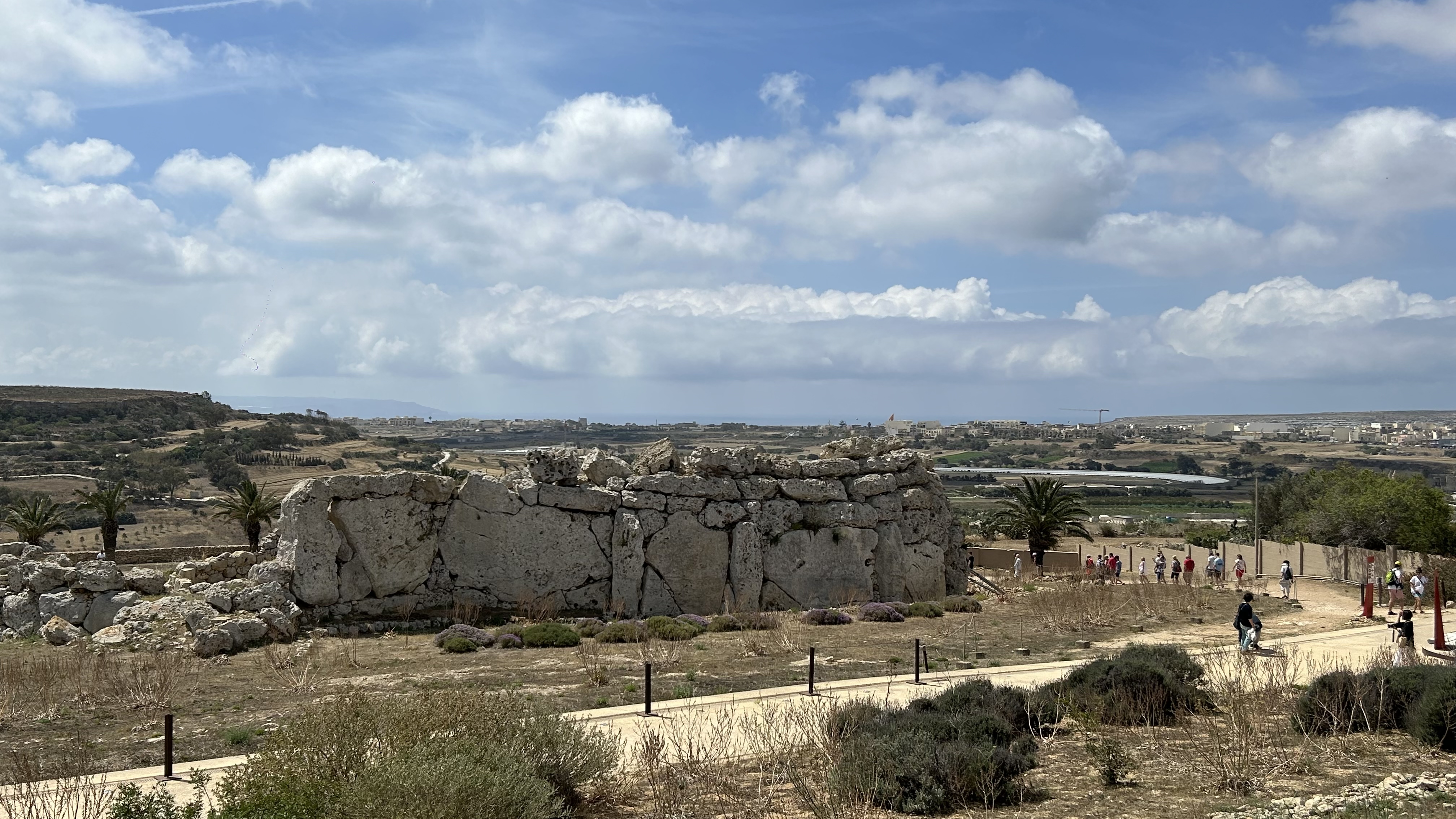
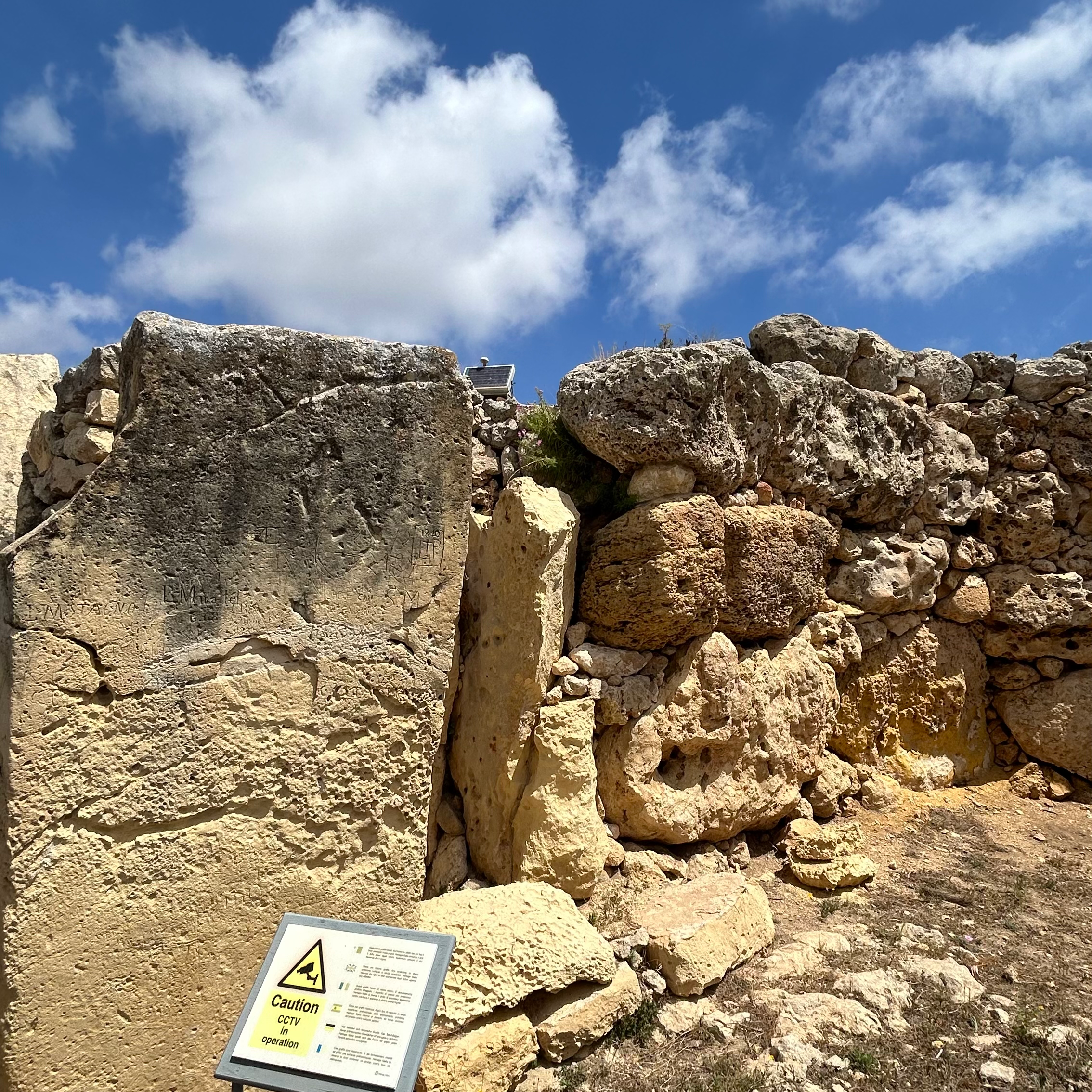
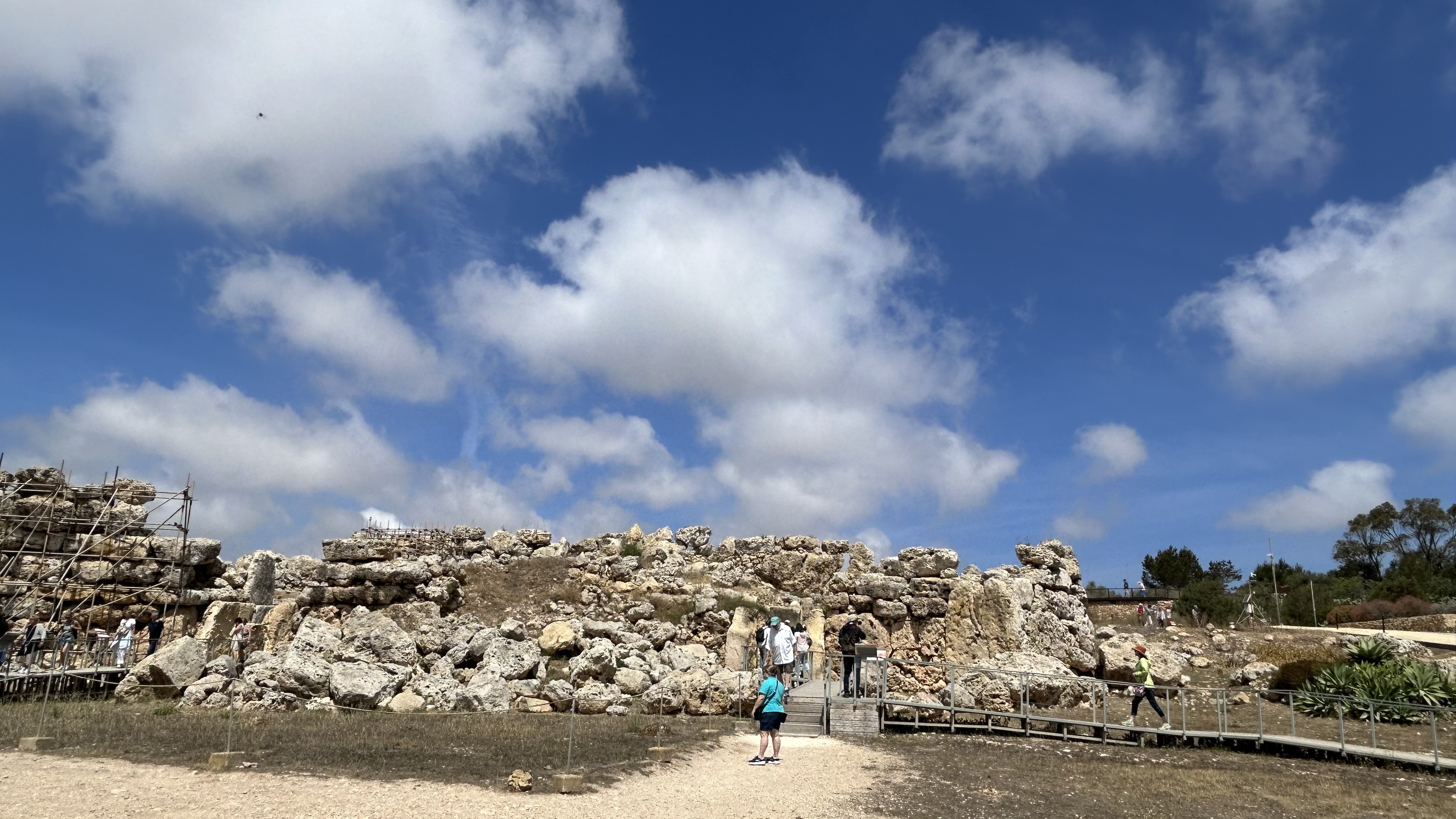
At the site, we could see the markings from the archaeological excavations and the protection measures for the archaeological site.
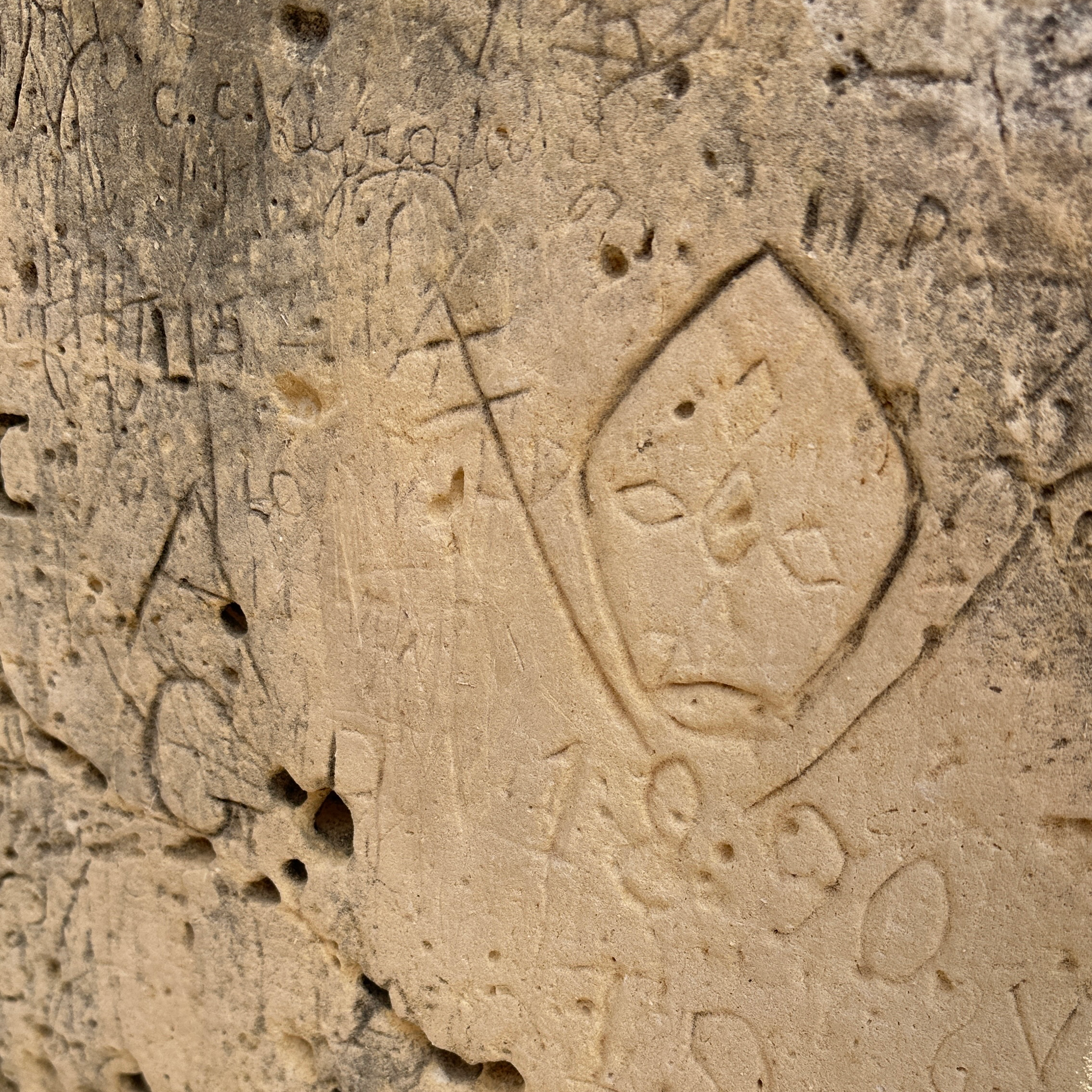
While visiting the site, we could see various traces and remains of the artificial structures built 5000 years ago.
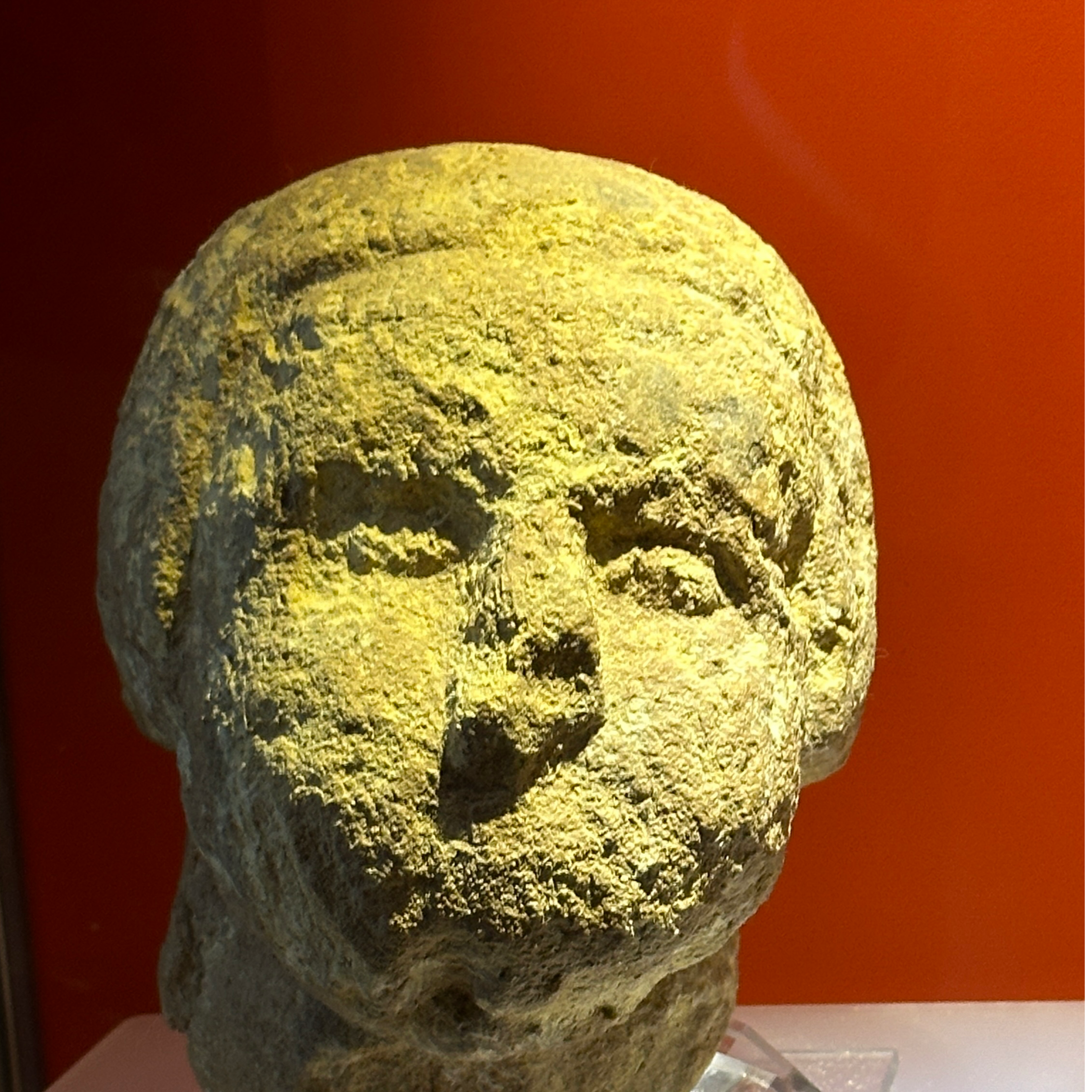
The Maltese Megalithic Temples are also known as the temples of the Maltese Megalithic Culture or belong to the Megalithic Culture era, and the guide also referred to it as the Ggantija Temple.
We spent about two hours here visiting the artifacts and the site, facing this temple ruin that predates the Egyptian pyramids by a thousand years.
After leaving the temple ruins, we headed to one of Malta's famous natural attractions, the Azure Window.
The Azure Window is the most famous attraction on Gozo Island and a must-visit in Malta.
It is located at the end of a cliff and is a natural arch formed from limestone, through which visitors can see the spectacular view of the Mediterranean where the sea meets the sky.
Unfortunately, it collapsed on March 8, 2017.
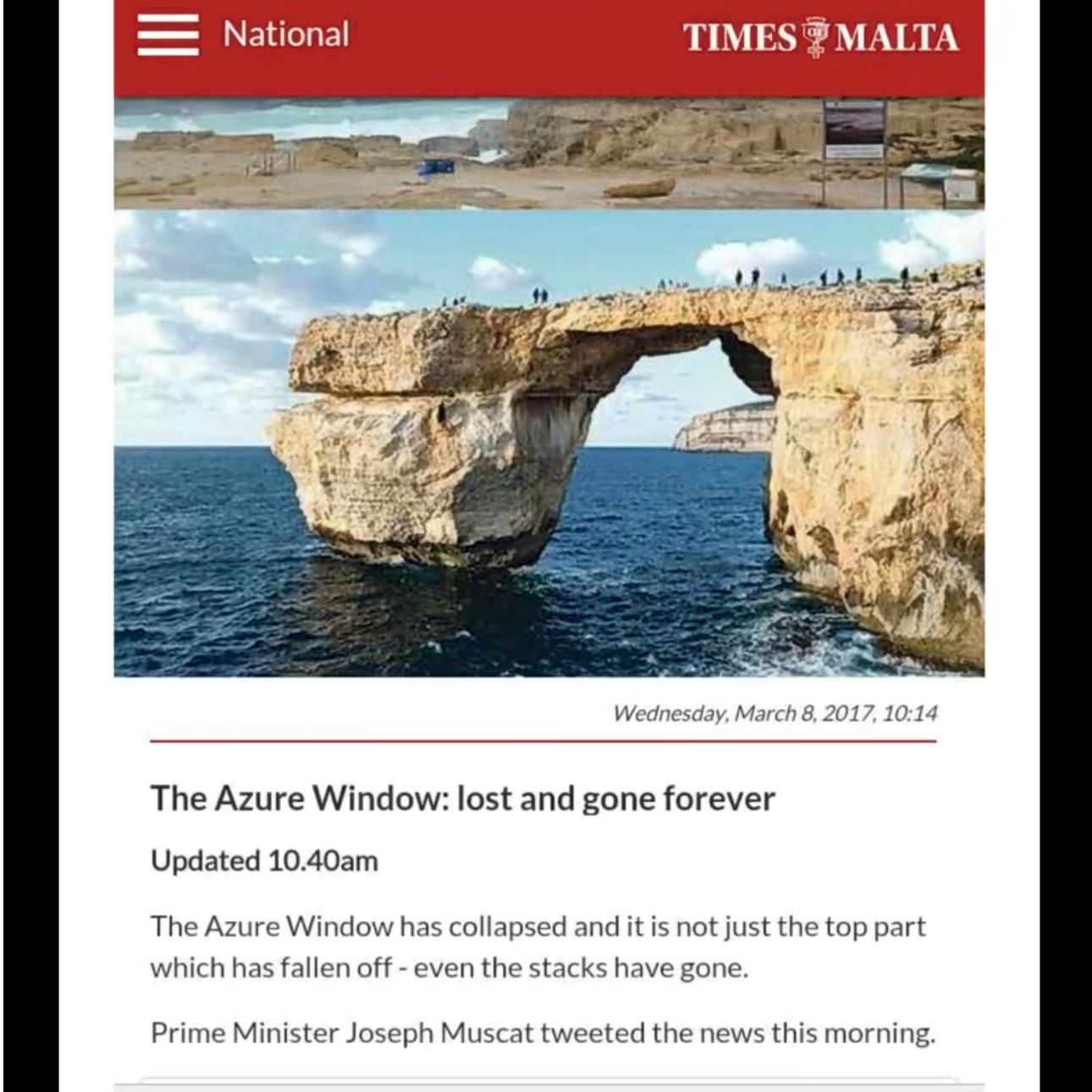
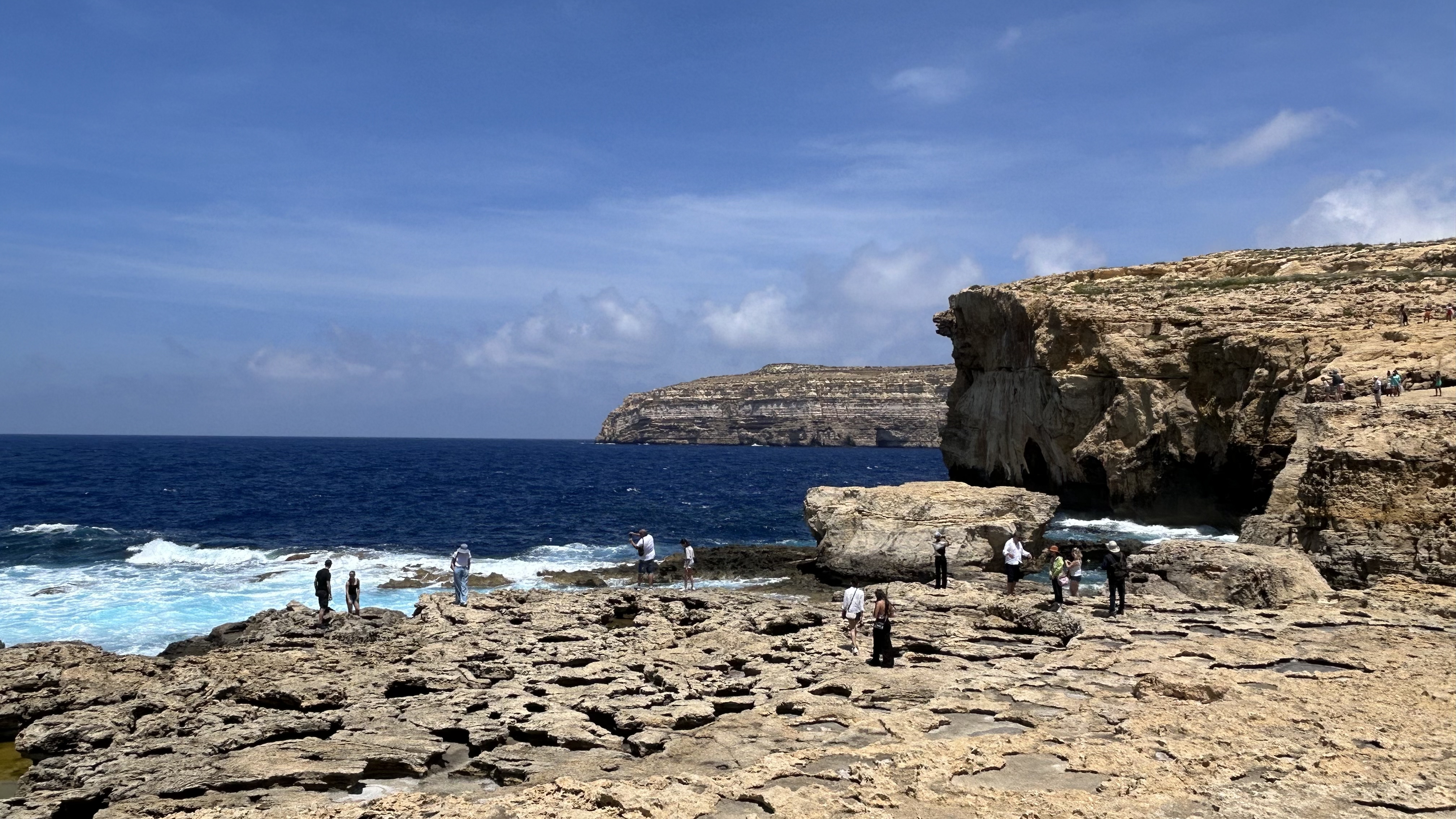
To view the Azure Window, one must descend from the parking lot and cross a large rocky area. The waves of the Mediterranean rise and fall, crashing against the cliffs and creating splashes; the sound of the waves and the scenery here are indeed extraordinary.
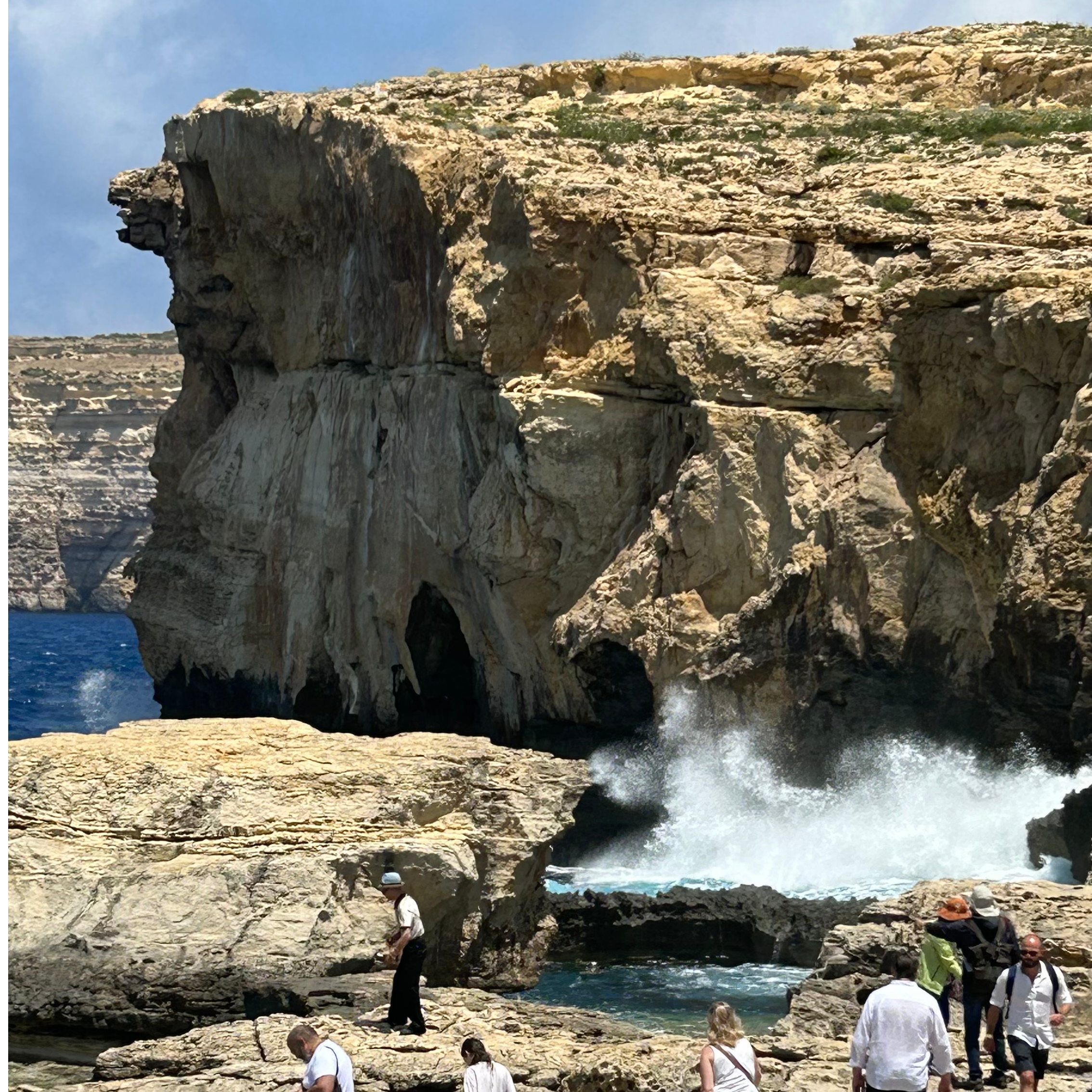
Although the Azure Window has collapsed, the cliffs and ruins remain. Since it is a popular photo spot, we stood on the cliff and took countless photos.
We lingered for about 40 minutes at the rock edge of the Azure Window ruins. We then headed to another attraction called "Heaven's Line," which is about 100 meters from the parking lot.
Heaven's Line is a cave that connects the inner sea to the outer sea, and at that time, many foreign tourists were playing with skateboards and swimming there.
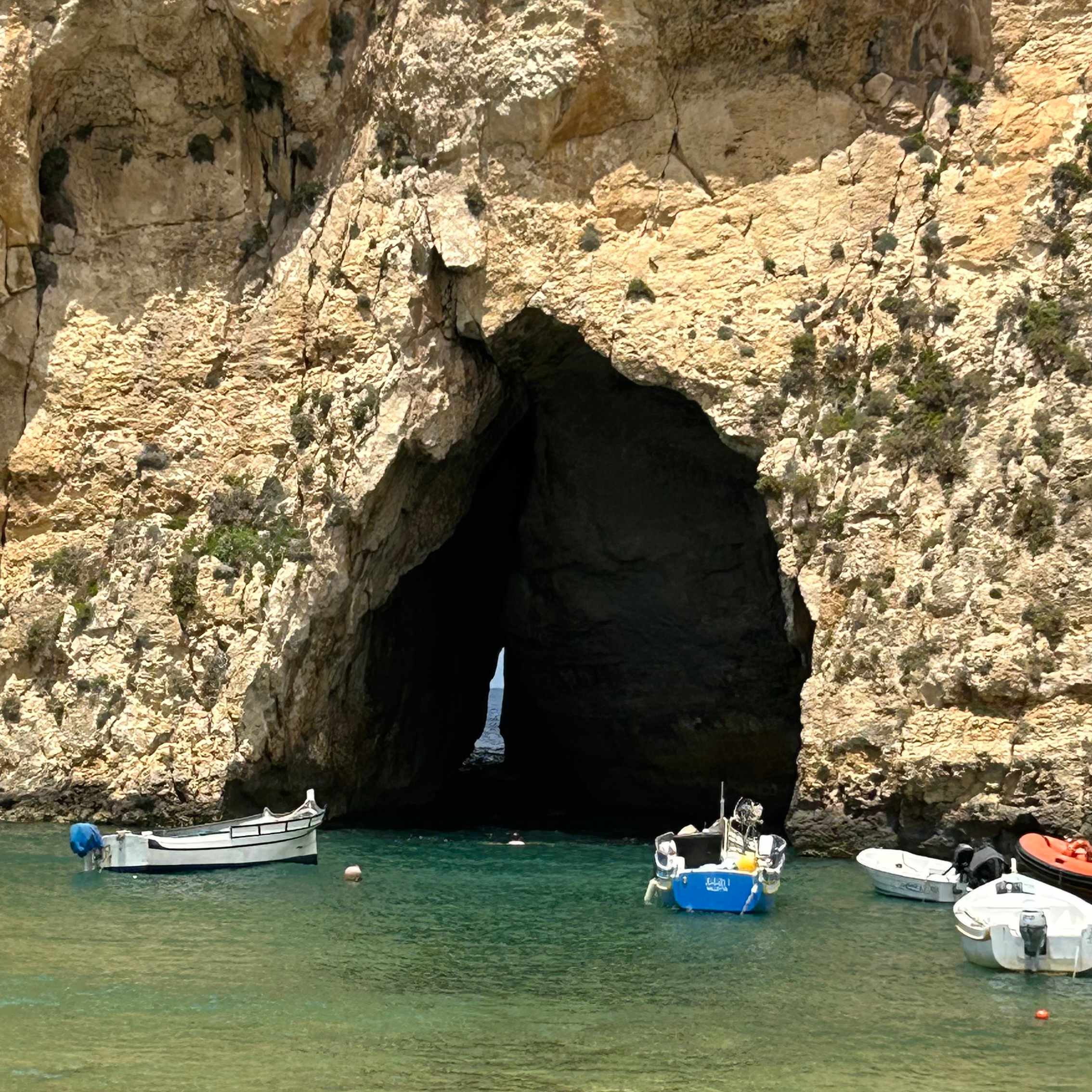
It was at Heaven's Line that I unfortunately injured myself while taking a photo.
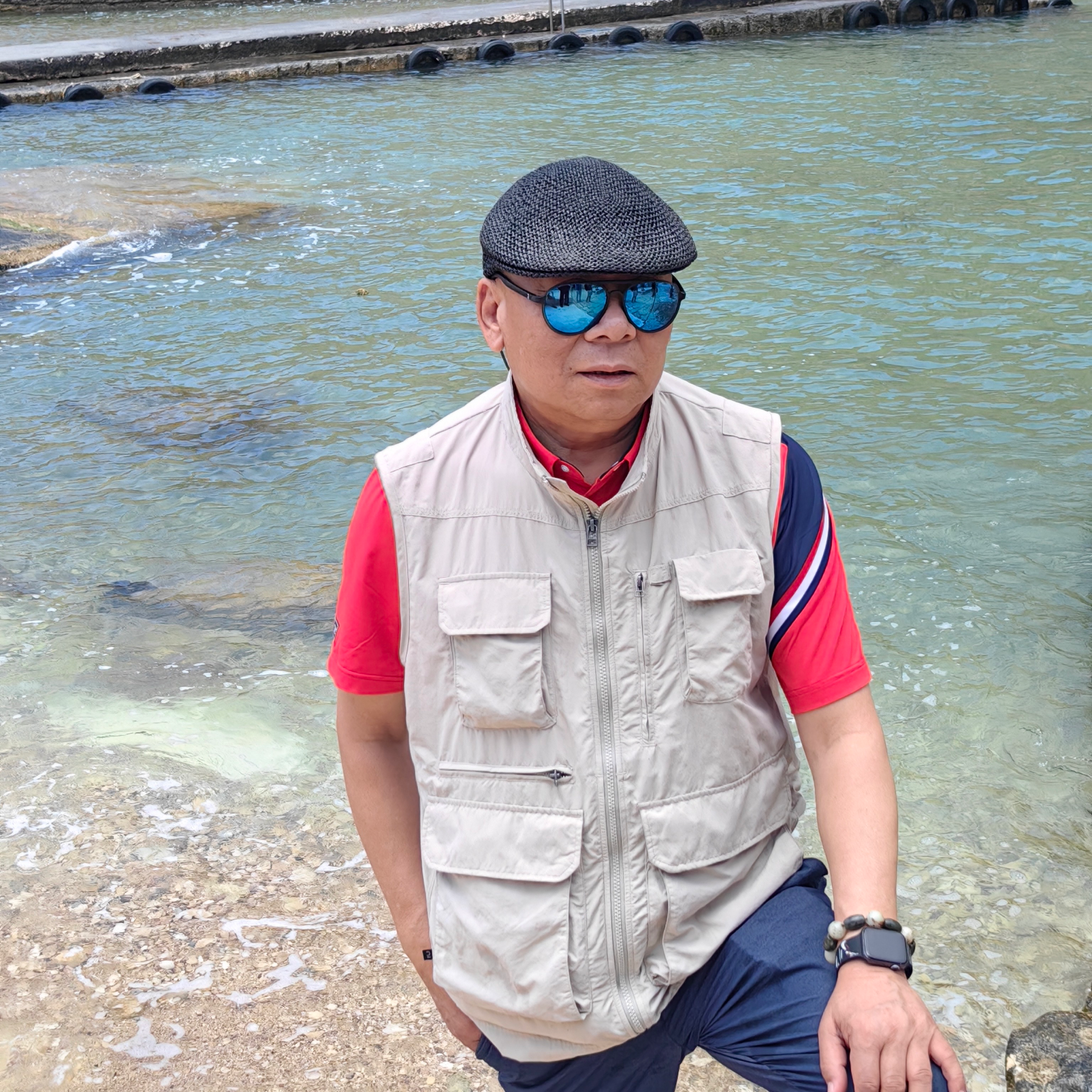
This photo was taken just a minute before the injury.
It was my own fault; my companions were taking pictures of me and asked me to step back a bit.
However, the rocks beneath my feet were covered with thick moss, and the waves were constantly washing over them, making them very slippery. I lost my balance and fell, landing on my left arm.
When I got up, my left arm could no longer move, and it was very painful.
My companions and the guide hurried over to check my injury and made a makeshift sling to stabilize my left arm.
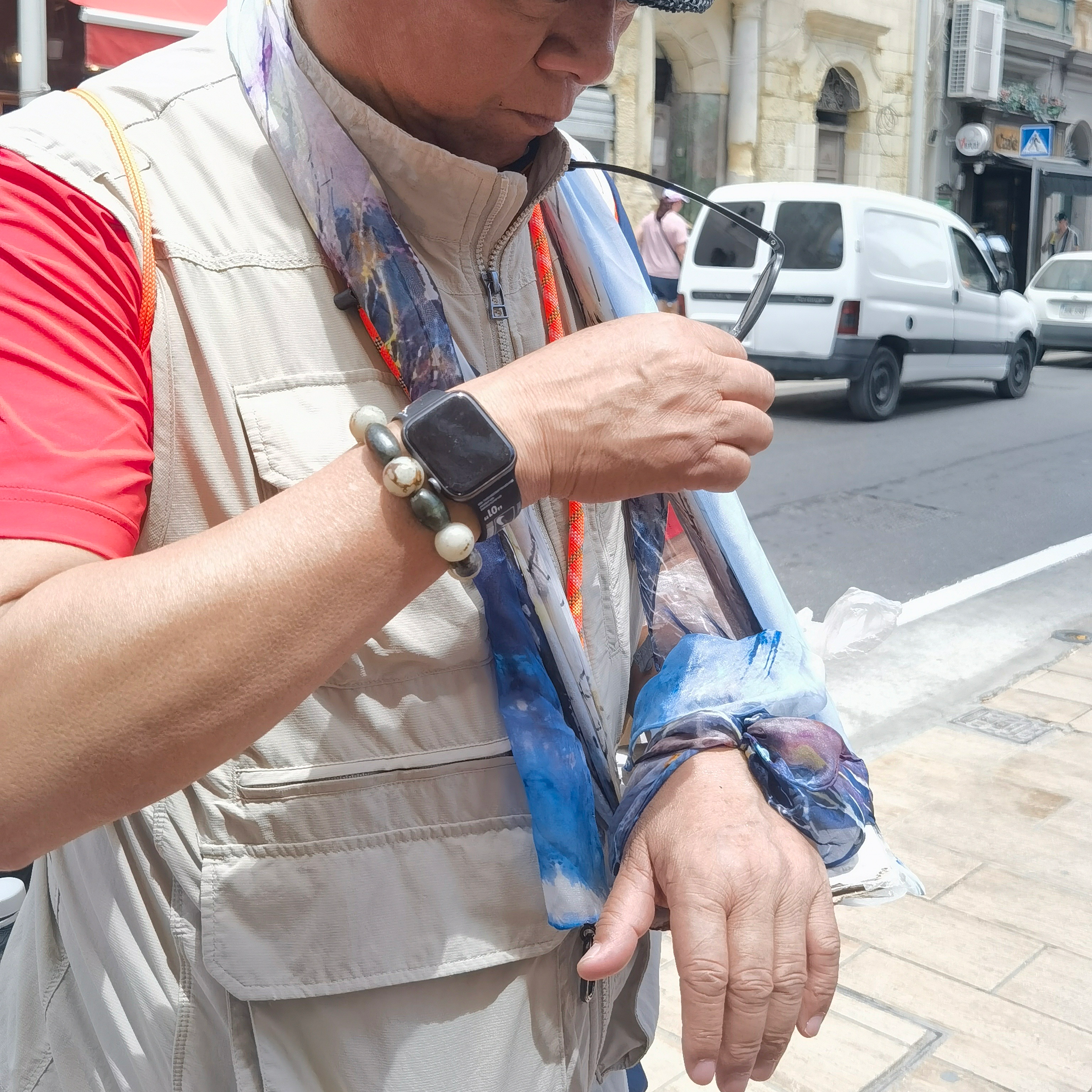
Since we were about to visit Victoria City and the fortress, and due to the local medical conditions, we decided to return to the capital Valletta in the afternoon to confirm whether I had a fracture.
Enduring the pain, we finished lunch in the ancient city of Victoria and then took the ferry back to the island of Malta.
(To be continued)
